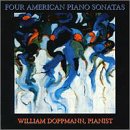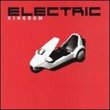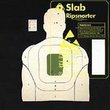| All Artists: Edward MacDowell, Charles Tomlinson Griffes, Ross Lee Finney, Samuel Barber, William Doppmann Title: Four American Piano Sonatas Members Wishing: 0 Total Copies: 0 Label: Equilibrium Records Release Date: 11/23/1999 Genre: Classical Styles: Chamber Music, Forms & Genres, Sonatas, Historical Periods, Classical (c.1770-1830), Modern, 20th, & 21st Century, Romantic (c.1820-1910) Number of Discs: 1 SwapaCD Credits: 1 UPC: 794055002729 |
Search - Edward MacDowell, Charles Tomlinson Griffes, Ross Lee Finney :: Four American Piano Sonatas
 | Edward MacDowell, Charles Tomlinson Griffes, Ross Lee Finney Four American Piano Sonatas Genre: Classical
|
Larger Image |
CD DetailsSimilar CDs |
CD ReviewsBunch of fascinating early romantics scarecrow | Chicago, Illinois United States | 03/15/2008 (5 out of 5 stars) "we often forget the transitional periods in music, the bridges,the inroads and the continuations of paradigms in creativity.In that transition never occurs in a striaght chromatic line,but more overlappings of durations, and appraisals of concept.Transition carries what composers feel to be music's eternal dimensions, as here the romantic gesture. Some of us would like to forget about Romanticism in that it hasn't yet loosened its grip its strangle-hold on music.Every spontaneous combustion of gesture,every extended-distended indulgence, any gratuitous use of violence,of subjectivity coming apart to its phrase and lyricism attests to its conceptual power.
The context here is the early American years of the 20th Century there was an ascendancy of of the "Robber Barons" who made wealth situated in the large cities, the banks and middle class wealth of Veblen's "conspicious consumption" around the 1900. One last glimpse of a Utopian place for the arts prior to the monstrous cycles of wars the 20th Century was then to know. Romanticism is an eternal musical language it even has drawn its 'tentacles'even into modernity. Certainly the gestural expressionisms within Elliott Carter,Milton Babbitt, Corigliano, Ralph Shapey, the 'Symphonies' of Christopher Rouse, and Glenn Branca,or the "clean" expressionist minimalisms of John Adams engage in a re-done affinity for the Romantic Spirit, it is a permanent buttress to institutionalized music.It is never defined as such, but composers seek shelter most of the time in their own voices and eternal tried and tested and regurgiatated genres, innovation is not always a better term for what is done in music. Well here these four composers need not reveal such vagaries or contradictions of their aesthetic they had freer subconsciousness to engage their work within the Romantic canon. The MacDowell 'Sonata #2' G-Minor is a transition from Listz(whom he studied with) and again Brahms,written equally as well for the piano; the piece attests to what to do with both simultaneously with its overwhelming gestures, filling up all the resonant spaces available,it is unreleneting in its musical arguments,yet stops at times to reflect; the way the painters focus on violence of everyday rural and city life then its mysteries and solitudes;, as Peter Heurd, Thomas Hart Benton, Wm.Steurt Curry, and Pierce.Some used this time to portray the solitudes of the spectacle of the parlor, the drawing room where family entertainment and ritual occurred;these values and gestures are in this music, although the MacDoweel is a large rotund work soliciting power from its lyricism well beyound its frame. Griffes as well studied in Europe and found the innovations in impressionism as useful to him. He died at a young age, 39, yet wrote indeliably compact well-shaped music within instrumental colours and timbres he came to utilize. The 'Sonata' A.85 here is in three compact movements, the opening "Feroce" is not quite full-tilt power as the other creators herein. They all wrote wonderfully for the piano well, studied what had come prior, each piece here is well crafted as Ross Lee Finney, who had a flair for the theatre, a Midwesterner. The 'Fourth Sonata' is also a large work when heard, 4 movements do not overspend their gesture, the musical ideas are quite original within this context. Samuel Barber is a "left-over romantic"from the "East-Coast School of USA lyricism" and shunned the post-war developments in music, He simply wrote as if modernity never happened,the price he paid however was 'hit and miss, hit and miss again",creating works with longevity (as the "Concerti", Violin(1936) Piano)", some fascinating chamber settings and "Songs",the ubiquitous eternal "Adagio" from his one and only "string Quartet". The rest arguably of his music is quite inconsequential. This is his one and only "Sonata". It was commissioned by Vladimir Horowitz,prior to his self-imposed "wihdrawel" from music, and has become a permanent "boulder" within piano repertoire.It is not going anywhere due to its strong affirmative construction,for well-thought arched structure. Its large gestures,as the opening "Allegro energico, Vivace" always give way to reflection, contemplation. Barber didn't know if he was a contrapuntalist or a straight-forward timbral composer. He seemed to be drawn to both in this "Sonanta"; He always wrote within compact classical shapes with direct contrasts to push his music along.Lyricism again seems to be what he knows best,motivic development is arbitrary at times;engaging more a "song-like form";(should have studied more Brahms or Schoenberg). There are always memorable,unforgettable points in his music, tunes, or phrases you can hum after morning coffee on the way to work. Here perhaps you might try the ending "Fuga Allegro con spirito", as the last indelible part of it quite memorable.Doppmann plays the "hell" out of all these works admirably,impassioned yet not overly so,he knows when the gesture of the music becomes marred and self-indulgent from too much resonance and unwanted sound." |

 Track Listings (16) - Disc #1
Track Listings (16) - Disc #1
